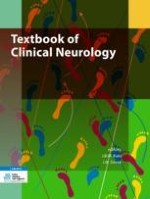Abstract
Cerebral infarctions and cerebral haemorrhages are cerebrovascular disorders (strokes). Strokes are a major cause of mortality and disability. Imaging is required to make the correct diagnosis. Cerebral infarctions are caused primarily by atherosclerosis, but there are cardiac and other – albeit rare – causes. A TIA is in fact an impending cerebral infarction and needs to be diagnosed quickly. The possibility of thrombolysis during the acute phase means that a cerebral infarction is a medical emergency. Hypertension, amyloid angiopathy and vascular malformations can cause intracranial bleeding. Subarachnoid haemorrhages are usually caused by a ruptured aneurysm. Rare cerebrovascular disorders are cerebral venous sinus thrombosis and cerebral vasculitis. The treatment of stroke patients requires a multidisciplinary approach. If residual symptoms are present after a cerebral infarction or cerebral haemorrhage the success of rehabilitation is affected by cognition and mood.
